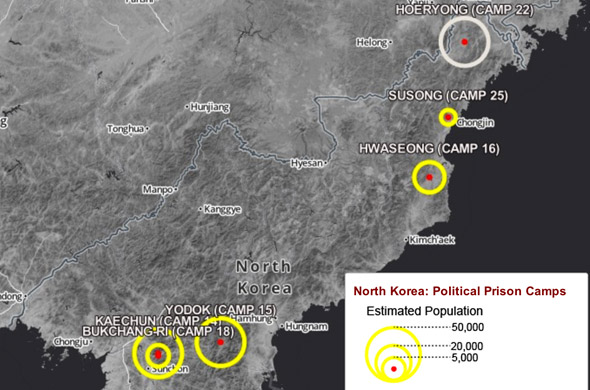This is the first of several postings of the North Korea Revealed blogging series, published in the context of efforts to establish a Commission of Inquiry at the current session of the UN Human Rights Council (February 25 – March 22). Join the conversation through #NKRevealed.
I was born in North Korea in 1982. I was born in a political prison camp (…) and lived there until I escaped in 2005 (…) I was born to an imprisoned mother and father. —Shin Dong-hyuk, the only known North Korean born in a political prison camp to have escaped.
Shin’s shocking story personifies the horrors of North Korea’s vast network of political prison camps, believed to house over a hundred thousand prisoners. His story is emblematic for the daily forced hard labor, calculated starvation and torture that prisoners have to endure. It also reflects the system of collective punishment that results in the incarceration of several generations of one family, often for life. You can hear more from Shin on a new video playlist, together with testimonies of other escapees and exiles. Their voices urge immediate action to stop the horrors of the prison camps. SEE THE REST OF THIS POST


